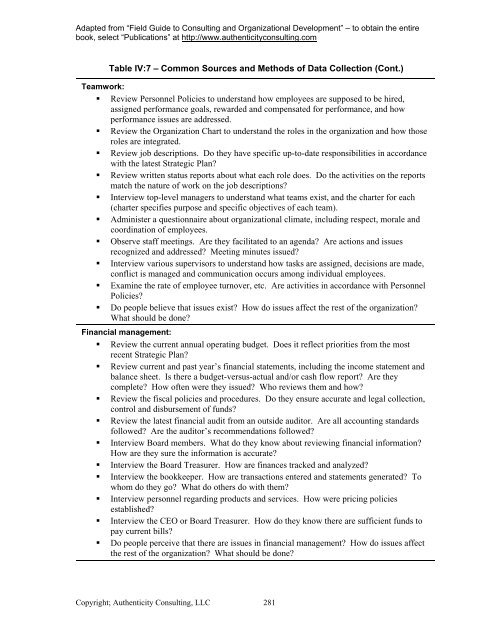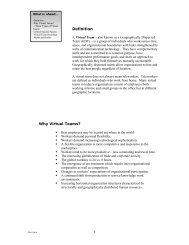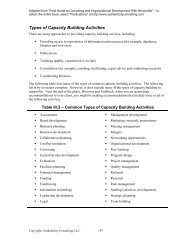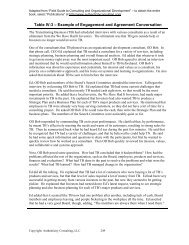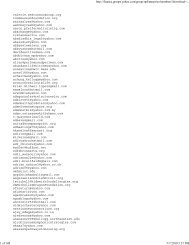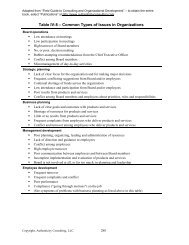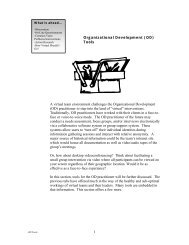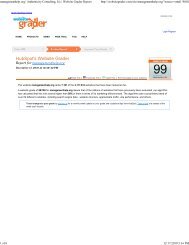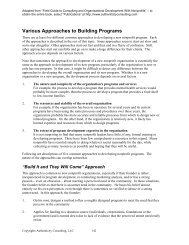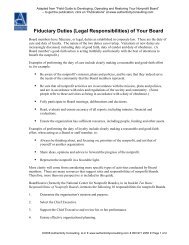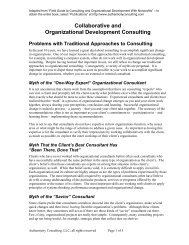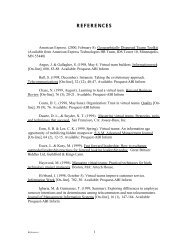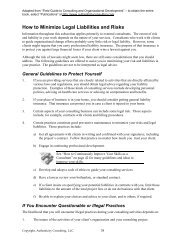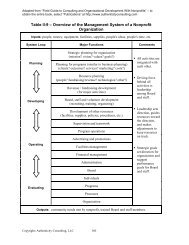Some Sources of Data and Methods to Collect that Data
Some Sources of Data and Methods to Collect that Data
Some Sources of Data and Methods to Collect that Data
You also want an ePaper? Increase the reach of your titles
YUMPU automatically turns print PDFs into web optimized ePapers that Google loves.
Adapted from “Field Guide <strong>to</strong> Consulting <strong>and</strong> Organizational Development” – <strong>to</strong> obtain the entire<br />
book, select “Publications” at http://www.authenticityconsulting.com<br />
Table IV:7 – Common <strong>Sources</strong> <strong>and</strong> <strong>Methods</strong> <strong>of</strong> <strong>Data</strong> <strong>Collect</strong>ion (Cont.)<br />
Teamwork:<br />
• Review Personnel Policies <strong>to</strong> underst<strong>and</strong> how employees are supposed <strong>to</strong> be hired,<br />
assigned performance goals, rewarded <strong>and</strong> compensated for performance, <strong>and</strong> how<br />
performance issues are addressed.<br />
• Review the Organization Chart <strong>to</strong> underst<strong>and</strong> the roles in the organization <strong>and</strong> how those<br />
roles are integrated.<br />
• Review job descriptions. Do they have specific up-<strong>to</strong>-date responsibilities in accordance<br />
with the latest Strategic Plan?<br />
• Review written status reports about what each role does. Do the activities on the reports<br />
match the nature <strong>of</strong> work on the job descriptions?<br />
• Interview <strong>to</strong>p-level managers <strong>to</strong> underst<strong>and</strong> what teams exist, <strong>and</strong> the charter for each<br />
(charter specifies purpose <strong>and</strong> specific objectives <strong>of</strong> each team).<br />
• Administer a questionnaire about organizational climate, including respect, morale <strong>and</strong><br />
coordination <strong>of</strong> employees.<br />
• Observe staff meetings. Are they facilitated <strong>to</strong> an agenda? Are actions <strong>and</strong> issues<br />
recognized <strong>and</strong> addressed? Meeting minutes issued?<br />
• Interview various supervisors <strong>to</strong> underst<strong>and</strong> how tasks are assigned, decisions are made,<br />
conflict is managed <strong>and</strong> communication occurs among individual employees.<br />
• Examine the rate <strong>of</strong> employee turnover, etc. Are activities in accordance with Personnel<br />
Policies?<br />
• Do people believe <strong>that</strong> issues exist? How do issues affect the rest <strong>of</strong> the organization?<br />
What should be done?<br />
Financial management:<br />
• Review the current annual operating budget. Does it reflect priorities from the most<br />
recent Strategic Plan?<br />
• Review current <strong>and</strong> past year’s financial statements, including the income statement <strong>and</strong><br />
balance sheet. Is there a budget-versus-actual <strong>and</strong>/or cash flow report? Are they<br />
complete? How <strong>of</strong>ten were they issued? Who reviews them <strong>and</strong> how?<br />
• Review the fiscal policies <strong>and</strong> procedures. Do they ensure accurate <strong>and</strong> legal collection,<br />
control <strong>and</strong> disbursement <strong>of</strong> funds?<br />
• Review the latest financial audit from an outside audi<strong>to</strong>r. Are all accounting st<strong>and</strong>ards<br />
followed? Are the audi<strong>to</strong>r’s recommendations followed?<br />
• Interview Board members. What do they know about reviewing financial information?<br />
How are they sure the information is accurate?<br />
• Interview the Board Treasurer. How are finances tracked <strong>and</strong> analyzed?<br />
• Interview the bookkeeper. How are transactions entered <strong>and</strong> statements generated? To<br />
whom do they go? What do others do with them?<br />
• Interview personnel regarding products <strong>and</strong> services. How were pricing policies<br />
established?<br />
• Interview the CEO or Board Treasurer. How do they know there are sufficient funds <strong>to</strong><br />
pay current bills?<br />
• Do people perceive <strong>that</strong> there are issues in financial management? How do issues affect<br />
the rest <strong>of</strong> the organization? What should be done?<br />
Copyright; Authenticity Consulting, LLC 281


